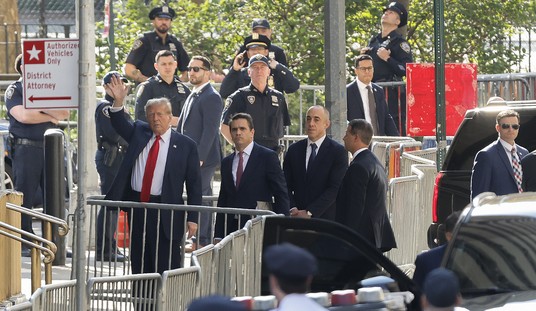11. Heinlein was married three times.
His first wife was named Elinor Curry. Not much is known about her, and their marriage lasted only about a year. Before leaving the Navy, Heinlein married Leslyn MacDonald. She was intelligent, well read and very liberal. Their marriage was ultimately unsuccessful, but it lasted for well over a decade. He was married to his third wife, Virginia, (nee Gerstenfeld), until he died in 1988.
It is believed many of his early heroines resemble Leslyn. Perhaps so, but perhaps Heinlein just liked multi-competent females. Having been privileged to speak to the third Mrs. Heinlein, I can attest she was intimidatingly intelligent and well read, and that I found her echo in many of his female characters. So much for everyone who claims that his women are men with breasts. (Whether he had a male’s naïve view of female sexuality is a wholly different matter. To a certain extent, try as we might, we are all prisoners of that space behind our eyes, and no matter how much talented individuals try to escape it, they’re prone to believing what others wish them to believe.)
12. After leaving the Navy, (and a brief attempt at silver mining) Heinlein got involved in politics.
This was mostly through the socialist machine in California. He worked with EPIC (End Poverty In California) and socialist Upton Sinclair and even made a run at politics for himself. The funny thing about stories from this period (say for instance The Roads Must Roll) is that his desire to believe in big, from the top programs seems to be in continuous tension with a sort of basic horse-sense belief in individualism. He might have believed that automobiles were too dangerous a technology to be left to mere individuals, but he also, clearly, saw the problems that would develop in a vast bureaucracy. In the end, perhaps he was too honest for politics.
13. Most of his early stories were published by John W. Campbell. But in his letter to Theodore Sturgeon, Heinlein makes fun of Campbell’s strong advocacy for the market: “You could get a Campbell-style story out of doubting the most sacred of sacred cows—except big business, of course; John does not tolerate outright heresy.”
However some of Campbell’s less strange ideas might very well have found a resonance with Heinlein in terms of his individualism and respect for market forces. Even while Heinlein was a socialist there are discordant notes in his stories that seem to indicate his common sense wouldn’t give way.
14. For Us The Living – Heinlein made a great success of his short stories and serials, but simply could not sell this book, his first novel. Years later, he must have realized just how appalling that book was, because he spent considerable time making sure every copy was destroyed. Alas, one copy escaped.
Is it truly appalling? I don’t know. It is appalling in comparison to later Heinlein. I don’t like many of those early pulp novels – certainly not enough to be conversant with most of them – so I can’t tell if his infodumps and very odd political preaching are normal for the time. There are themes that echo: cats, unconventional humans (what my fans call Odds) and a sort of happy-go-lucky sexual free for all. However, his bitter animadversions about marriage are clearly the result of his own falling apart. Those aren’t present in his later works.
At any rate, publishing that novel is like publishing a master caligrapher’s early work, all blotches and scratches. Make note – should I ever become that famous (which is unlikely thank heavens) – and should someone track down and publish my first novel (which I intend to burn while my husband’s back is turned – he’s perversely attached to it) I will come back from the grave to haunt them. And I don’t much care if it turns out there’s no life after death. I’ll find a way.
15. Robert A. Heinlein and his second wife ran the Manana Literary Society, a writers’ group from which emerged Anthony Boucher, Arthur K. Barnes, Edmond Hamilton, L. Ron Hubbard, Henry Kuttner, C.L. Moore, L. Sprague de Camp, Cleve Cartmill, Leigh Brackett, and Jack Williamson.
From their mentoring and probably most unlikely of all, Ray Bradbury got his start.
****
Next Saturday morning, the conclusion in part 4: “His Happy Destiny”













Join the conversation as a VIP Member